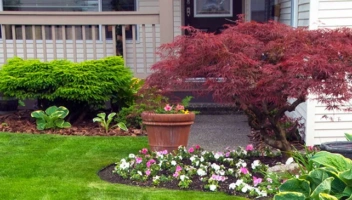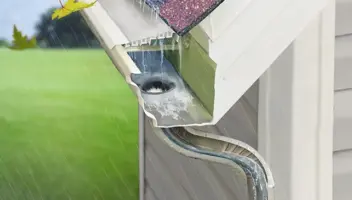Gutter Guard Reviews: Which Ones Really Work?

Not all gutter guards are created equal. There are various types of gutter guards with different designs that are supposed to do the same thing and channel water away from your home, however, many of these gutter guards are simply ineffective. They can trap debris and even make clogged gutters an even bigger problem!
This can make researching gutter guards difficult. How do you know which gutter guards are the best for your home? Take a look at our gutter guard reviews and see how to eliminate gutter cleaning and prevent clogged gutters for good!
Find the Best Gutter Guards: Pros and Cons of Each Type
There are many different kinds of gutter guards on the market. Take a look at some of the most common gutter guards, along with their pros and cons, to see which design is best.
Brush Gutter Guards
Brush gutter guards are one type of gutter guard that is easily installed by the homeowner. They look like pipe cleaners and are placed inside of your open gutter. Many gutter guard reviews note the affordable cost of gutter guards, but they are cheaply and poorly made and will not stop all types of debris. In fact, debris like leaves, pine needles, and maple spinners can get trapped inside the brush gutter guard, so you’ll have to frequently climb the ladder to give them a good shake. Eventually, these gutter guards will deteriorate and need to be replaced, making them a temporary and ineffective solution.
Foam Gutter Guards
Foam gutter guards are another type of gutter guard that can be easily placed inside your gutters, however, they can cause serious clog concerns. When debris gets trapped inside of the foam gutter guard and gets added to water, plants can grow out of your gutters! Trapped water and plant life will add to the weight of the gutters and can cause your gutters to sag and pull away from your home. Unless you want a garden growing in your gutters, we recommend skipping this type of gutter guard altogether.
Hood Style Gutter Guards
Hood gutter guards, also known as reverse-curve gutter guards, feature a long opening that runs the entire length of the gutter. Often professionally installed, these types of gutter guards are supposed to work on the idea of surface tension, where water will divert into your gutters while keeping debris out. Unfortunately, due to its design, things like leaves, pine needles, and maple spinners will enter your gutters. You may need to remove the system in order to frequently clean the inside of the gutter and prevent buildup.
Another concern of hood-style gutter guards is the way they are installed. An installer will have to pry up your shingles to slide the system under your first row of shingles. You may not realize it, but this can actually void your roof warranty! Plus, since the angle at which the hood gutter cover is installed depends on the pitch of your roof, it could contribute to wat


